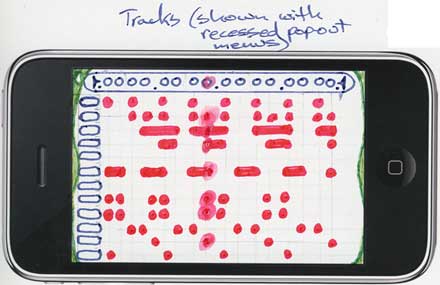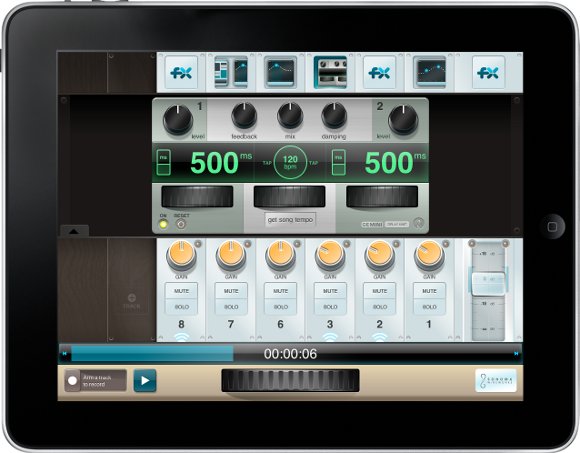I’ve completed my round-up of some of the most compelling music creation applications coming to iPad at or near launch:
iPad Apps for Music Making: What’s Coming, The Bigger Picture
The revised post includes some new videos and apps introduced over the weekend, so check out the full line-up. My thinking was that putting everything in one place makes it easier to find, and to get a sense of the … well, the bigger picture.
The iPad DAW? Perhaps the most intriguing addition is StudioTrack from Sonoma (pictured at top), which looks most like a traditional DAW, but with bigger, friendlier, finger-tip friendly touch controls. Through Sonoma’s AudioPaste capability, you’ll be able to pull sounds from other apps and paste them into this environment for mixing.

The one, free app you need to get is clearly Richard Lawler’s PatternMusic, a unique way of generating looped, instrumental music ideas. I love the thought he’s put into the UI, which has yielded some unusual interface concepts, and his hand-drawn sketch above (lifted from his blog.)
Considering UI design: Speaking of UIs for slates, David Battino of Looptastic developer Sound Trends offers some more thoughts on “flattening” user interfaces which could be relevant to UI design for other apps, too — even beyond the iPad. Check out the video below.
Seeing the interface in action made me realize that adding space can have a significant impact on flow. I think it was Julian Colbeck who floated the great analogy that programming a Wavestation SR was like trying to paint your landing through your mail slot. Beyond the boost in performance, just increasing the space should make a surprising difference.
Hardware restrictions – more details: On the lest drool-inducing, more unpleasant side of our iPad coverage, I’ve gone into greater detail – to whatever extent possible – with the discussion of hardware restrictions on the platform. The situation is convoluted and complex, and researching this topic is challenging, as the limitations on developers are written in legal code that Apple then requires developers to keep confidential. But the short answer is, if you’re hoping for flexible hardware input and output via either Bluetooth or the dock connector, don’t get your hopes up. For the more technical answer, see the updated story:
Of MIDI, iPhones and iPads, and a Restrictive Future for Hardware?
Finally, if you’re curious to reflect on touch as a musical input – for better and for worse – here’s a look at Smule’s latest app, playing a familiar tune.
